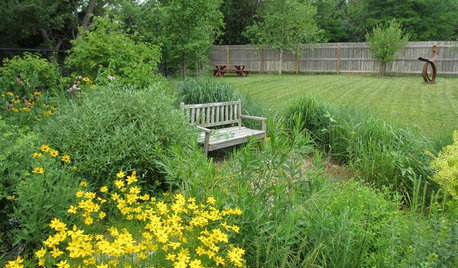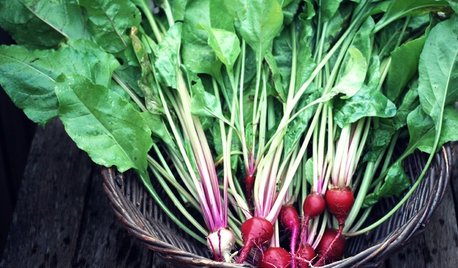Timing of last fertilization in Maryland 7a?
viche
9 years ago
Related Stories

GARDENING GUIDESGet on a Composting Kick (Hello, Free Fertilizer!)
Quit shelling out for pricey substitutes that aren’t even as good. Here’s how to give your soil the best while lightening your trash load
Full Story
HOUSEPLANTSMeet a Long-Lasting Houseplant With a Forgiving Heart
Low light and little watering won't scar Zee Zee plant for life; this East Africa native has a tolerant nature and an exotic beauty
Full Story
HOUZZ TOURSMy Houzz: Playfulness and Practicality in a Maryland Family Home
This suburban brick colonial is anything but cookie cutter with its colorful, eclectic style
Full Story
HOUZZ TOURSMy Houzz: Art and Fashion Inspire in a Maryland Family Home
White walls provide a clean backdrop for a downtown home infused with art, pattern and fashion
Full Story
HOUZZ TOURSMy Houzz: A Century’s Worth of Charm in Maryland
The design of this 1910 family home thoughtfully combines vintage features and modern touches
Full Story
HOUZZ TOURSMy Houzz: Vintage Charm and DIY Style in Maryland
A Cape Cod-style family home overflows with hand-painted pieces and personalized style
Full Story
GARDENING GUIDESHow to Design a Garden That Lasts
Climates are changing. Wildlife is evolving. Can your garden keep up?
Full Story
MY HOUZZMy Houzz: Classic East Coast Style in Maryland
Collected vintage finds, clean furnishings and European touches are highlights of a couple's bright and airy 1923 house
Full Story
EDIBLE GARDENS8 Last-Minute Additions to a Summer Edible Garden
It’s not too late to get these vegetables and herbs planted for a bountiful harvest this year
Full Story
DIY PROJECTSMake a Beautiful and Long-Lasting Driftwood Centerpiece
Add succulents to found wood for an easy arrangement that looks straight from a designer florist's shelf
Full Story







morpheuspa (6B/7A, E. PA)
beckyinrichmond
Related Professionals
Derry Landscape Architects & Landscape Designers · Windham Landscape Architects & Landscape Designers · Oconomowoc Landscape Architects & Landscape Designers · Rossville Landscape Architects & Landscape Designers · Blue Springs Landscape Contractors · Brooklyn Park Landscape Contractors · Fishers Landscape Contractors · Gainesville Landscape Contractors · Hollywood Landscape Contractors · Midland Landscape Contractors · Northport Landscape Contractors · Palm Beach Gardens Landscape Contractors · Pompton Lakes Landscape Contractors · New Carrollton Landscape Contractors · Brenham Swimming Pool BuildersvicheOriginal Author
beckyinrichmond
morpheuspa (6B/7A, E. PA)
vicheOriginal Author
vicheOriginal Author
beckyinrichmond
morpheuspa (6B/7A, E. PA)
vicheOriginal Author
beckyinrichmond
morpheuspa (6B/7A, E. PA)
vicheOriginal Author
morpheuspa (6B/7A, E. PA)
beckyinrichmond
vicheOriginal Author
morpheuspa (6B/7A, E. PA)
vicheOriginal Author
beckyinrichmond
beckyinrichmond
morpheuspa (6B/7A, E. PA)
vicheOriginal Author
morpheuspa (6B/7A, E. PA)
vicheOriginal Author
vicheOriginal Author
morpheuspa (6B/7A, E. PA)